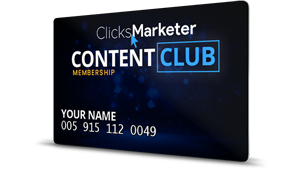Bing’s local search results work off a pretty clear set of factors that decide which businesses show up front and center. The three core elements that shape local rankings are relevance, distance, and popularity. Each one plays its own role in how Bing picks which businesses to spotlight when someone’s searching nearby for something.

Getting a handle on these factors gives any business a real edge. Relevance means a listing fits what someone wants. Distance is all about how close you are to the searcher. Popularity? That’s how well-known or trusted you look online.
Let’s break down what each one really means and how Bing weighs them. If you’re trying to show up more in local searches, understanding these is a must.
Understanding Bing Local Ranking Factors

Bing looks at how well a business matches what users want, how close it is to them, and how recognized it is online. If you keep your Bing Places for Business listing sharp and your local SEO game strong, you’re in a good spot.
Overview of Relevance, Distance, and Popularity
Relevance is Bing’s way of checking if a business listing fits the search query. That includes keywords in your business name, description, and categories. The more detailed and accurate you get, the easier it is for Bing to match you up with the right searches.
Distance comes into play by focusing on businesses close to the searcher. Even if you’re super relevant, being far away might knock you down the list. Bing tries to balance how close you are with how relevant you are.
Popularity is about how well-known your business is, both on the web and out in the world. Bing pays attention to things like reviews, ratings, inbound links, and mentions. If you’ve got a strong online presence and your info is consistent across directories, you’re more likely to show up higher.
How Bing Local Search Works
When someone searches for a local business, Bing checks out the search query, user location, and the business listing details. Bing Places for Business feeds Bing structured info—like hours, address, and categories—so it can double-check everything.
Third-party directories and data providers also help Bing verify your info. If your details are outdated or conflicting, Bing might not trust your listing as much, which can hurt your rankings.
User engagement, like clicks or requests for directions, counts too. Bing sees this as proof that your business is actually helpful, which can boost your spot in local results.
Comparison with Google Local Search
Bing and Google both use relevance, distance, and popularity as their main local ranking factors, but they don’t weigh everything the same way. Google Business Profile leans heavily on Maps and mobile, while Bing Places for Business relies a lot on directory data and structured listings.
Google seems to reward businesses that keep their profiles fresh and post updates often. Bing, on the other hand, really cares about consistency across the web. So, just because you’re crushing it on Google doesn’t mean you’ll automatically top Bing’s results.
Bing also brings in third-party data to double-check listings, while Google mostly trusts its own ecosystem and user contributions. If you want to show up on both, you’ve got to watch your listings and keep an eye on how people are interacting with them.
Relevance: Aligning with User Intent

Visibility in search depends a lot on matching what users are actually after. Bing checks business info, keyword use, and how you categorize yourself to figure out if you’re what people want.
Optimizing Business Information
It’s simple: keep your info accurate and consistent everywhere—Bing Places for Business, your site, directories, you name it. If your name, address, or phone number (that’s NAP for the acronym fans) don’t match up, Bing’s not going to trust you.
Make sure business hours, services, and photos are up-to-date too. The more details, the better.
Structured data markup (like schema.org) helps reinforce who you are and what you do. It’s like sending Bing a cheat sheet, so there’s less guesswork.
Keyword Usage and Search Intent
Bing looks at how your content matches what people are really searching for. Use keywords the way your customers actually talk—not just the generic industry stuff. “Family dentist in Dallas” beats just “dentist” every time.
Try to work those terms into your title tag, meta description, and headings, but don’t overdo it. If it reads like a robot wrote it, people (and Bing) will notice.
Think about the type of search too. If someone’s just looking for info, you’ll want detailed content. If they’re ready to buy or book, focus on your services and pricing. Matching the right keywords to the right intent really does help with clicks.
Category Selection and On-Page SEO
Pick the right categories in Bing Places for Business. It’s not just a box to tick—categories tell Bing what you actually do. Go as specific as you can. If you’re a vegan bakery, don’t just pick “bakery.”
On your website, back up those categories with clear headings and service pages. Make sure your title tags, meta descriptions, and internal links all line up with what you’ve chosen. It’s about making things obvious for both users and search engines.
Distance: The Role of Proximity in Local Rankings
Distance really shapes which businesses Bing puts in front of users. It’s not just about being relevant or popular; being physically close matters a ton—especially for “near me” searches.
How Bing Calculates Proximity
Bing uses your location as a starting point, if you’ve got location services on. It’ll pull from GPS, Wi-Fi, or your IP address to figure out where you are.
The search itself matters too. If someone types “coffee shop near me”, Bing’s going to show what’s closest. But if the search is “coffee shop in downtown Seattle”, it’ll focus on that area.
Proximity isn’t everything, though. If a business a little farther away is way more relevant, Bing might still bump it up. It’s a balancing act—usefulness wins.
Impact of Business Location Data
Having accurate business location info is crucial. Bing relies a lot on Bing Places listings—those addresses, categories, and service areas all feed into its decisions.
If you’ve got multiple locations, make sure each one is listed separately. That way, Bing can match the right place to the right search. If you serve a bigger area, you can set service areas, but your physical address is still the anchor.
Keep your address the same everywhere. If Bing sees different addresses on your site, Bing Places, and directories, it gets confused. That can mess with your rankings.
Mobile Search and User Location
Mobile searches crank up the importance of proximity. People on their phones want something now—restaurants, gas, stores—so Bing tries to show what’s right there.
If your site’s mobile-friendly, you’ve got a leg up. If two businesses are equally close, Bing’s going to pick the one that works better on mobile. A clunky site can hurt you.
As users move, Bing updates results on the fly. So if you’re driving across town, what you see changes with you. Proximity’s pretty dynamic when you’re on the go.
Popularity and Prominence: Building Authority
Bing measures popularity by checking how much a business is recognized and trusted online. Stuff like links, reviews, and being listed everywhere all help prove you’re legit.
Backlinks and High-Quality Citations
Backlinks are still a big deal. If you’re getting links from reputable sites—local news, industry groups, well-known blogs—Bing sees that as a trust signal. Junky links from random places don’t help much.
Citations matter too. That’s just your business name, address, and phone number (NAP) showing up on directories, maps, and listing sites. Consistency is key; if your info is all over the place, Bing gets suspicious.
Key elements of effective citations:
- NAP is identical everywhere
- You’re listed on trusted directories (think Yelp, TripAdvisor, etc.)
- You show up in local chambers of commerce or industry directories
Backlinks and citations work together. If you’ve got both, your odds of showing up higher on Bing go way up.
Customer Reviews and Engagement
Reviews aren’t just for show—they really impact Bing’s view of your business. More positive reviews? That’s a good look. Detailed feedback helps too; it gives Bing more context about what you do well.
Responding to reviews—good or bad—shows you care. Bing picks up on that engagement, and it can help boost your visibility.
Sites like Yelp and TripAdvisor feed reviews into Bing’s ranking system. If you’re active there and encourage real, honest reviews, you’ll keep fresh content flowing.
Online Reputation Across Platforms
Bing doesn’t just check one site. It looks at your reputation across directories, social media, and niche review platforms. If you’re consistently positive everywhere, that’s a strong trust signal.
Keep an eye on what people are saying about you. If there’s negative feedback sitting unanswered, it can drag you down. Quick, honest responses show you’re on top of things.
Structured data helps too. Marking up your reviews and ratings with schema makes it easier for Bing to understand your reputation. The more transparent and consistent you are, the better your authority signals.
Optimizing Your Bing Places for Business Listing
If you want to stand out in Bing’s local results, you need a complete, accurate profile, verified ownership, and some engaging content. Each detail helps build trust.
Claiming and Verifying Your Listing
Claim your Bing Places for Business listing so you’re in control. Unclaimed listings can end up with old info, which is a trust killer.
Verification usually means getting a PIN by mail, phone, or email. Pop that in, and you’re set. Don’t lose your login—updating later is a pain if you do.
Once you’re verified, you’ll get access to insights like impressions and clicks. It’s handy for tweaking your digital marketing and tracking what’s working.
Completing Business Details
Make sure your business name, address, phone (NAP), website, and hours are all filled out and match everywhere. Missing or inconsistent info can knock you down in rankings.
Pick the most specific, relevant categories for your business. If you’re a restaurant, “Italian Restaurant” beats just “Restaurant” every time.
Add payment options, service areas, and any extras you can. The more complete your listing, the better Bing can match you with the right searches.
Utilizing Visual Content
Good photos make a huge difference. Shots of your storefront, inside, staff, and products help people know what to expect. Listings with images usually get more clicks.
Upload your logo, cover photo, and a mix of images. A clear logo builds your brand, and fresh photos show you’re active. Bad or outdated pics? Not a great look.
You can even add video—give a tour or highlight what makes you special. Visuals don’t just look nice; they can boost your digital marketing and help you stand out.
Technical and On-Page SEO Considerations for Bing Local
Technical SEO still matters. Site speed, security, and structured data all play into how Bing sees your site and where you land in local search results. Don’t sleep on the details—they add up.
Site Speed and Mobile-Friendliness
Bing really cares about site speed—nobody likes waiting for a page to load, right? If your site drags on for more than a few seconds, you’re probably losing both visitors and ranking.
Compressing images and trimming down unnecessary scripts can help a lot. Efficient caching doesn’t hurt either, and honestly, it’s not as complicated as it sounds.
Then there’s mobile-friendliness, which is just as crucial. Bing checks if your site can handle different screen sizes and still look good on a smartphone.
Responsive design, easy-to-use navigation, and text that isn’t microscopic all boost accessibility. It’s just basic courtesy for your users.
Testing tools like Bing Webmaster Tools, Google’s PageSpeed Insights, or GTmetrix can point out what’s slowing you down.
Structured Data and Schema Markup
Structured data gives search engines extra context—think of it as a cheat sheet about your business. With schema markup, you can spotlight things like your business hours, address, phone number, and even reviews.
This helps Bing show the right info in local listings and those fancy rich results. For local businesses, you’ll want to look at these schema types:
- LocalBusiness (for the basics)
- PostalAddress (so people can actually find you)
- Review and AggregateRating (because feedback matters)
If you get your schema markup right, Bing will interpret your data the way you intended. But if you mess it up, your info might not show up at all—so it’s worth double-checking with something like Bing Markup Validator or the Schema.org tools.
Schema isn’t just for search results anymore. It’s also helping with voice search and maps, which are getting more important every year.
HTTPS and Website Security
Bing really prefers websites that use HTTPS. An SSL certificate encrypts the chatter between your site and visitors, which keeps stuff like form submissions and logins safe.
If your site’s missing HTTPS, browsers might throw up scary warnings that send users running. Nobody wants that.
Switching to HTTPS? It’s a trust booster and can give your search ranking a nudge. Bing does count HTTPS as a ranking factor, though it’s just one piece of the puzzle.
Security isn’t just about HTTPS, though. Keeping your software, plugins, and CMS up to date matters too.
Regularly checking for vulnerabilities helps lower risks that could mess with your users or your local search mojo.



